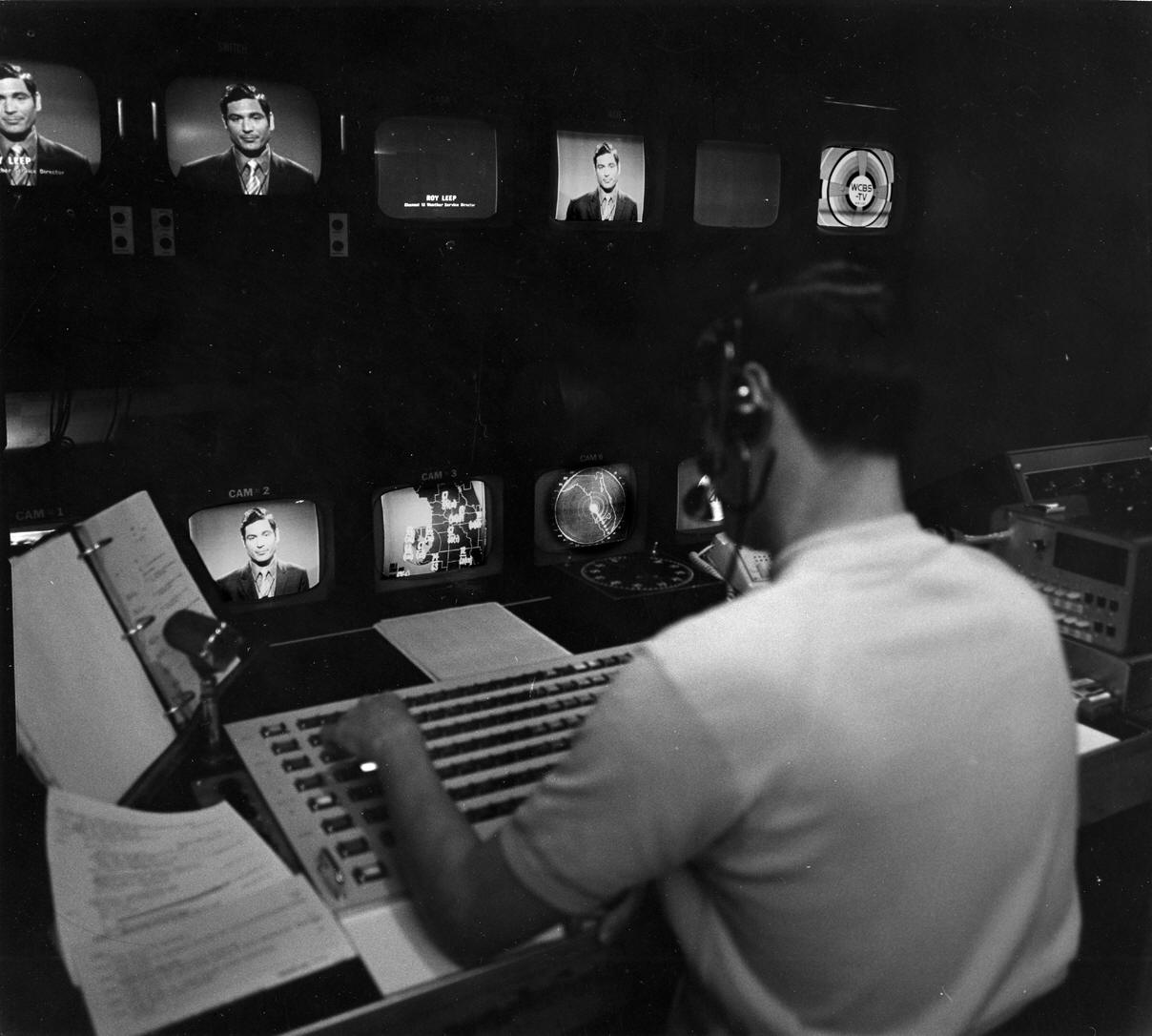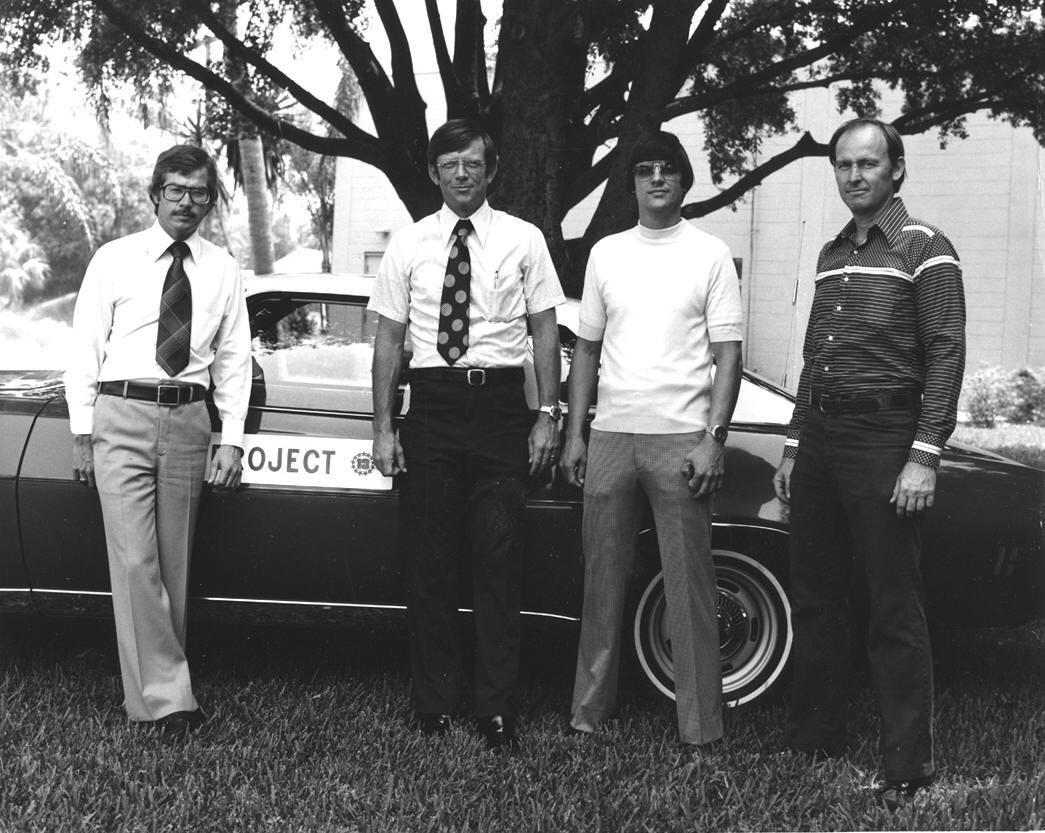
Jim in his natural habitat...the control room!
"….I EVENTUALLY LIKED DIRECTING AS MUCH AS CAMERA WORK…"

Jim in his natural habitat...the control room!
The 1968 departure of Doug Ibold for a career in Los Angeles opened up a position for Jim and he discovered a new passion: directing. "Directing is hard to explain to those who don't do it. A director has to have an ability to coordinate things in his mind, and I didn't really think I had that in the beginning… but I developed it. I eventually liked directing as much as camera work. It could be very dicey at times but it could also be very rewarding. In those days we punched and called the shots without a TD . When you've got a TD, you have to think ahead of yourself. Some TD's are little reacting, some are a little fast, and you make the adjustment."
Jim's new boss, Dan Boger
When production manager Ken Smith left WTVT in 1968, Dan Boger was promoted to fill his position and Jim was made assistant production manager. Happily, he was still able to direct in studio and on remotes, and serve as crew supervisor on network remotes. Directing news, commercials, and the public service programs was de riguer for directors at BIG 13 and it allowed them to work in all types of production including news (Pulse), interviews (Insight), music (Church Service/'Pat Sings' for Pulse Plus!), sports (football), drama (College Kaleidoscope), and game shows (High-Q). All WTVT directors had their personal strengths but could fill in for any format of studio program or remote. Jim did all of it well and seemed to have been born to rule the director's booth.
A typical Publix commercial (early 1970s)
Jim
became very adept at directing Publix commercials that required rolling in tape
and film combined with live elements in the studio. It was an ability that came
in handy when the station started the ambitious documentary series Project 13,
produced and hosted by newsman Ray Blush and photographed by Jule McGee.

Jim and the Project 13 crew (L to R - Larry Elliston, Ray
Blush, Jim, and Jule McGee)
|
|
|
|
Every Wednesday evening Blush and McGee brought their film and tape elements for Benedict to combine into a finished program. "Ray was very good at writing the scripts for post production and we would try to get it done without stopping because editing in the 70's was not very easy or accurate," explains Jim. "There were two film chains for Jule's 16mm photography, audio tape with narration and music, and live cameras for adding supers and photographs. I was calling roll cues off the script and working the switcher, dissolving or fading and adding titles. We were using analog timers on the quad machines and they slipped a little. We could spend 90 minutes editing a thirty second piece! Jule and Ray liked my contributions and later asked me to come out on location for a few shows on film and others shot on video with portable tape machines."